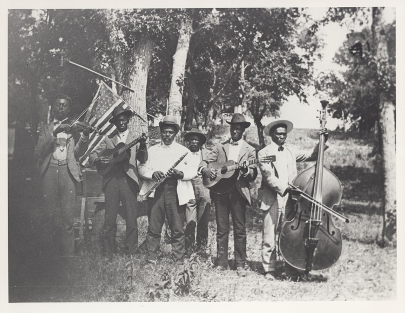Reconstruction
Overview
Reconstruction
Learning Objective
By the end of this section/chapter, you will be able to:
- Summarize the influence Reconstruction had on Texas
Introduction
The term Reconstruction has two applications: the first applies to the complete history of the entire country from 1865 to 1877 following the American Civil War; the second, to the attempted transformation of the 11 former Confederate states from 1863 to 1877, as directed by Congress, and the role of the Union states in that transformation. Reconstruction ended the remnants of Confederate secession and abolished slavery, making the newly freed slaves citizens with civil rights ostensibly guaranteed by three new constitutional amendments. As a former Confederate state, Texas underwent this transformation.
Juneteenth

During the American Civil War, Texas had joined the Confederate States. The Confederacy was defeated, and U.S. Army soldiers arrived in Texas on June 19, 1865 to take possession of the state, restore order, and enforce the emancipation of slaves. The date is now commemorated as the holiday Juneteenth. On June 25, troops raised the American flag in Austin, the state capital.
Formerly enslaved people in Galveston rejoiced in the streets after the announcement, although in the years afterward many struggled to work through the changes against the resistance of whites. The following year, freedmenorganized the first of what became the annual celebration of Juneteenth in Texas.3 In some cities, African-Americans were barred from using public parks because of state-sponsored segregation of facilities. Across parts of Texas, freed people pooled their funds to purchase land to hold their celebrations, such as Houston's Emancipation Park, Mexia's Booker T. Washington Park, and Emancipation Park in Austin.
Reconstruction in Texas
U.S. President Andrew Johnson appointed Union General Andrew J. Hamilton, a prominent politician before the war, as the provisional governor on June 17. He granted amnesty to ex- Confederates if they promised to support the Union in the future, appointing some to office. Angry returning veterans seized state property and Texas went through a period of extensive violence and disorder. Most outrages took place in northern Texas and were committed by outlaws who had their headquarters in the Indian Territory and plundered and murdered without distinction of party.
On March 30, 1870, the United States Congress readmitted Texas into the Union, although Texas did not meet all the formal requirements for readmission. Like other Southern states, by the late 1870s white Democrats regained control, often with a mix of intimidation and terrorism by paramilitary groups operating for the Democratic Party. They passed a new constitution in 1876 that segregated schools and established a poll tax to support them, but it was not originally required for voting. In 1901 the Democratic- dominated legislature imposed a poll tax as a requirement for voting, and succeeded in disfranchising most blacks. The number of voters decreased from 100,000 in the 1890s to 5,000 by 1906.
References and Further Reading
Stephenson, Mrs. Charles (Grace Murray). Emancipation Day Celebration band, June 19, 1900, photograph, June 19, 1900; Accessed August 25, 2019.
University of North Texas Libraries, The Portal to Texas History, crediting Austin History Center, Austin Public Library.
Clampit, Brad R. (April 2005). The Breakup: The Collapse of the Confederate Trans-Mississippi Army in Texas, 1865. Southwest Historical Quarterly. CVIII.
"Juneteenth". Texas State Library and Archives Commission. Retrieved August 25, 2019.
Gates, Henry Louis, Jr. "What Is Juneteenth?" The African Americans: Many Rivers to Cross. PBS. Originally posted on The Root. Retrieved August 25, 2019.
Constitution of 1876. Handbook of Texas Online. Accessed August 25, 2019.
W. Marvin Dulaney, "AFRICAN AMERICANS," Handbook of Texas Online, accessed February 22, 2014. Uploaded on June 9, 2010. Modified on June 20, 2013. Published by the Texas State Historical Association.
Licenses And Attributions
CC LICENSED CONTENT, ORIGINAL
Revision and Adaptation. Authored by: Kris S. Seago. License: CC BY: Attribution